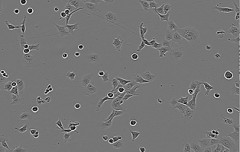Scientists from Yale University improved the process for preparing a family of compounds, which have the ability to destroy cells that cause cancer and other diseases, and discovered that they constitute a separate and unique category of anti-cancer substances.

The research team tested a family of compounds known as kinamycins, substances obtained after the metabolism of bacteria and known for their toxicity. For many years, scientists believed that the toxicity of these substances stems from a common structure that repeats itself in all these compounds. Until now, chemists could not examine this common structure because no simple laboratory process existed for its production.
Now, the team of chemists from Yale University has been able to develop an innovative method to create this structure, a method that allows them to synthesize these materials more efficiently than before. Although scientists have previously succeeded in producing kinamycins in the laboratory, the Mail research team was able to halve the number of steps required to obtain the final compounds - from twenty-four to a dozen.
"Thanks to the shortening of the synthesis process, we are now able to prepare these compounds in the quantities required for further tests, including research in the pharmaceutical industry and even clinical tests," said researcher Seth Herzon, professor of chemistry at the university and lead author of the article.
The research team, in collaboration with researchers from other departments at the university, has already begun to test several compounds from this family against cancer while receiving promising initial findings. In the next step, the researchers will try to understand the exact mechanism that allows the active compounds to become toxic from the moment they enter the cells.
"The key to success lies in the degree of selectivity of these compounds - will they be able to destroy cancer cells in the presence of healthy cells that will not be damaged during the activity," notes the researcher. "Based on what we already know about the activity of these compounds, I am optimistic that they will succeed in doing so."
The active common structure of kinamycins also plays a key role in another compound that the research team is examining called lomaiviticin A, which is even more toxic and could be many times more effective in destroying cancer cells. "Lumiotticin A is the "oily fish". It is much more active than kinamycins, but it is also more difficult to prepare," explains the lead researcher.
These two types of compounds have a unique toxicity profile, the researcher notes, and they constitute a new category of anti-cancer substances. "This research involves fascinating chemistry, but its findings also have practical applications in the fields of biology and medicine."
